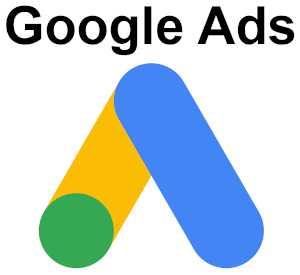Google Ad Strategy Delivers Efficient Pay Per Click

A Google ad strategy is an inexpensive, efficient and highly educational way of driving targeted pay-per-click traffic to a website.
It can be inexpensive because there is no minimum monthly charge.
A Google ad strategy is efficient because the advertiser pays only for the click and not the impressions.
It is educational because it will teach the active user a great deal about how people use the Internet to search. It focuses their efforts on relevancy.
Why It Works So Well
Let’s start with a brief primer on Google Ads for anyone who has not used it before.
Google Ads is a tool that delivers contextual advertising on Google.com and its network of advertising partners (including this website).
Contextual advertising means that an ad appears on a page when the ad is relevant to the content. They have something in common.
For example, someone goes to Google.com and enters “Paris weather” in the search box because she is planning to go to Paris, France for vacation next week and wants to know the weather forecast.
The search results that appear will display the sites with the most relevance to “Paris weather.” But Google also will display advertisers who sponsor the keyword “Paris weather” among the search results.
The advertisers who paid to sponsor the keyword “Paris weather” may have a France travel site to promote.
If the searcher clicks on one of the text ads, that advertiser will pay for the click.
The advertiser will pay nothing if the searcher clicks on the basic search results from the Google index that appear in the middle of the page and not in the ad positions.
Let’s say the advertiser has established a daily budget of $1 to spend with Google and that the average cost per click for “Paris weather” is 20 cents.
That means the advertiser will receive five visits per day (20 cents x 5 visits = $1) before the budget limit is reached. Once the budget is reached, the ad will stop appearing.
Adding Efficiency
Paying per click is only one part of the efficiency. Google (as well as Bing, Yahoo, Facebook and others) provide interest, geographic and demographic targeting as well.
On the Settings tab, the advertiser can display the ads in specific geographical areas such as countries, states, cities, zip codes and even a certain number of miles around a zip code. The mileage feature is useful for local businesses that draw customers from a limited area based on driving time.
Interest-based targeting is available for the display ad network but not the search network. These “affinity audiences” as Google defines them are available after clicking the “Interests and Remarketing” radio button.
Demographic targeting is available for gender, age and parental status. Like interest targeting, it’s important to note that demographic targeting is available for the display ad network and not the search network.
Both networks allow targeting by device — desktop, tablets and mobile devices.
Targeting with a Google ad strategy does have its downsides. Take it too far and find that the audience is so small and the costs so high that the return on investment might not be worth it.
Imagine a Realtor trying to target a specific zip code along with 10 other Realtors. A single click might cost $10 or more, which is worth it if the click results in the sale of a house. But it’s not worth it if 50 clicks produce no sale at all.
Trying It is Low Risk
Getting started with Google ad strategy is a simple but entirely efficient way of promoting a website. You truly get what you pay for.
I recently saw a survey about the audience sources for a large group of websites. It found that about 6 percent of their total traffic came from advertising.
Anyone who is thinking about online advertising should consider it as part of a total marketing strategy. Getting started can be inexpensive and low risk.
Go to Google.com and click on the Advertising link under the search box to sign up or learn more.
Bing and Yahoo also offer contextual advertising through a partnership. Go to Bing.com, scroll to the bottom and click on Advertise.

 Promise Media offers online business tips and best practices for content-rich websites.
Promise Media offers online business tips and best practices for content-rich websites.